Postmenopausal
How to submit an article:
- Registered users can submit any published journal article that has a unique DOI (Digital Object Identifier) name or link to Research Hub.
- For example, you can paste the full DOI link:
https://doi.org/10.1109/5.771073or just the DOI name:10.1109/5.771073into the field above and click submit. - The person who is first to submit a valid article to Research Hub will forever be credited for it, and every article submission earns you +6 Research Points.
Related Topics
Published research studies are articles that present the findings of original research that has undergone a peer-review process and has been made publicly available in scholarly journals, books or other media.
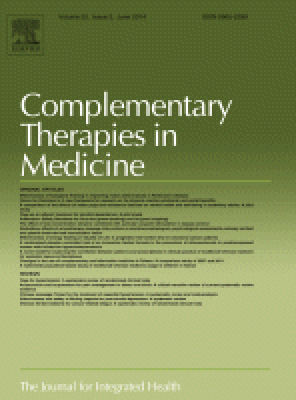
A dietary intervention for postmenopausal hot flashes: A potential role of gut microbiome. An exploratory analysis
2023 Dec Complementary Therapies in Medicine Kahleova H, Holtz DN, Strom N, La Reau A, Kolipaka S, Schmidt N, et al.
Randomised Controlled Trial Low Fat Diet Gut Microbiota SoybeanChanges in gut microbiome associated with a low-fat, vegan diet and cooked soybeans may reduce the frequency and severity of postmenopausal hot flashes.

Long-Term Consumption of Green Tea Can Reduce the Degree of Depression in Postmenopausal Women by Increasing Estradiol
2023 Oct 25 Nutrients Wan Z, Qin X, Tian Y, Ouyang F, Wang G, Wan Q
Cohort Study Depression Green Tea Anti-Inflammatory Sleep OestradiolLong-term consumption of green tea can potentially lessen the risk of depression in postmenopausal women by decreasing inflammation and boosting estradiol levels.
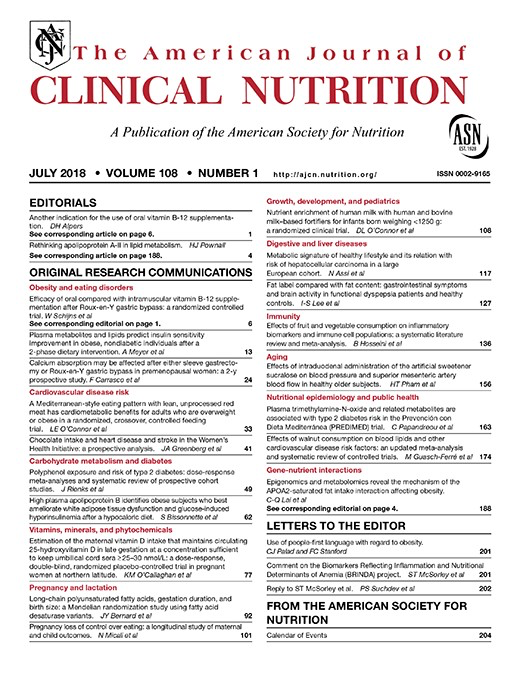
Moderate consumption of freeze-dried blueberry powder increased net bone calcium retention compared with no treatment in healthy postmenopausal women: a randomized crossover trial
2023 Aug The American Journal of Clinical Nutrition Hodges JK, Maiz M, Cao S, Lachcik PJ, Peacock M, McCabe GP, et al.
Experimental Study Clinical Study Randomised Controlled Trial Bone Calcium BlueberryModerate consumption of blueberries may effectively reduce bone loss in healthy postmenopausal women.
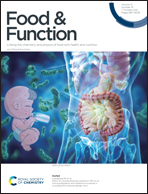
Daily blueberry consumption for 12 weeks improves endothelial function in postmenopausal women with above-normal blood pressure through reductions in oxidative stress: a randomized controlled trial
2023 Jan Food & Function Woolf EK, Terwoord JD, Litwin NS, Vazquez AR, Lee SY, Ghanem N, et al.
Daily consumption of freeze-dried blueberry powder for 12 weeks improves endothelial function through reduced oxidative stress in postmenopausal women with above-normal blood pressure.
Randomised Controlled Trial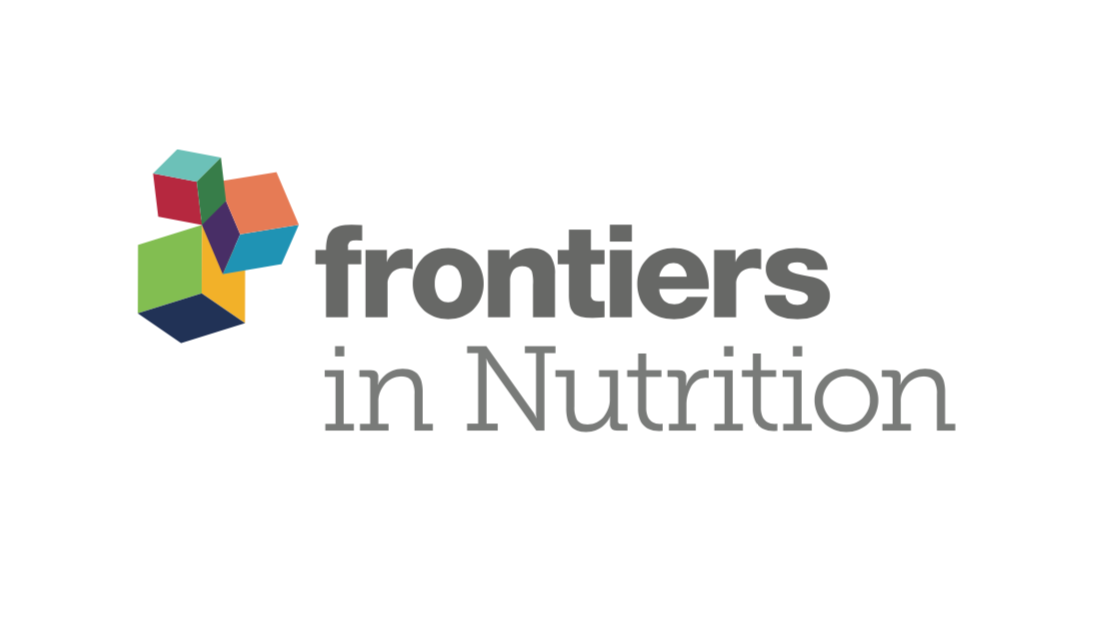
Effect of moderate beer consumption (with and without ethanol) on osteoporosis in early postmenopausal women: Results of a pilot parallel clinical trial
2022 Nov 15 Frontiers in Nutrition Trius-Soler M, Tresserra-Rimbau A, Moreno JJ, Peris P, Estruch R, Lamuela-Raventós RM
Clinical Study Postmenopausal Osteoporosis BeerModerate beer intake does not show a protective effect against bone loss in early post-menopausal women.
Research insights are moderated by the Research Hub team and offer an at-a-glance overview of interesting research findings.

2023 Complementary Therapies in Medicine
Changes in gut microbiome associated with a low-fat, vegan diet and cooked soybeans may reduce the frequency and severity of postmenopausal hot flashes.
Randomised Controlled Trial Gut Microbiota Low Fat Diet Soybean
A dietary intervention for postmenopausal hot flashes: A potential role of gut microbiome. An exploratory analysis
Kahleova H, Holtz DN, Strom N, La Reau A, Kolipaka S, Schmidt N, et al.

2023 Nutrients
Long-term consumption of green tea can potentially lessen the risk of depression in postmenopausal women by decreasing inflammation and boosting estradiol levels.
Cohort Study Anti-Inflammatory Depression Green Tea Oestradiol Sleep
Long-Term Consumption of Green Tea Can Reduce the Degree of Depression in Postmenopausal Women by Increasing Estradiol
Wan Z, Qin X, Tian Y, Ouyang F, Wang G, Wan Q

2023 The American Journal of Clinical Nutrition
Moderate consumption of blueberries may effectively reduce bone loss in healthy postmenopausal women.
Experimental Study Blueberry Bone Calcium
Moderate consumption of freeze-dried blueberry powder increased net bone calcium retention compared with no treatment in healthy postmenopausal women: a randomized crossover trial
Hodges JK, Maiz M, Cao S, Lachcik PJ, Peacock M, McCabe GP, et al.

2022 Frontiers in Nutrition
Moderate beer intake does not show a protective effect against bone loss in early post-menopausal women.
Clinical Study Beer Osteoporosis
Effect of moderate beer consumption (with and without ethanol) on osteoporosis in early postmenopausal women: Results of a pilot parallel clinical trial
Trius-Soler M, Tresserra-Rimbau A, Moreno JJ, Peris P, Estruch R, Lamuela-Raventós RM

2022 PeerJ
The primary ingredient of Shenling Baizhu powder, Rutin, can improve polycystic ovary syndrome and postmenopausal osteoporosis by binding to the aromatic hydrocarbon receptor, thus inhibiting cell apoptosis.
Network Pharmacology PCOS Rutin
Prevention of polycystic ovary syndrome and postmenopausal osteoporosis by inhibiting apoptosis with Shenling Baizhu powder compound
Liang J, Bao A, Ma H, Dong W, Li W, Wu X, et al.
Review Articles
Review articles summarise and critically evaluate the current state of research on a specific topic or field by synthesising multiple primary research studies.
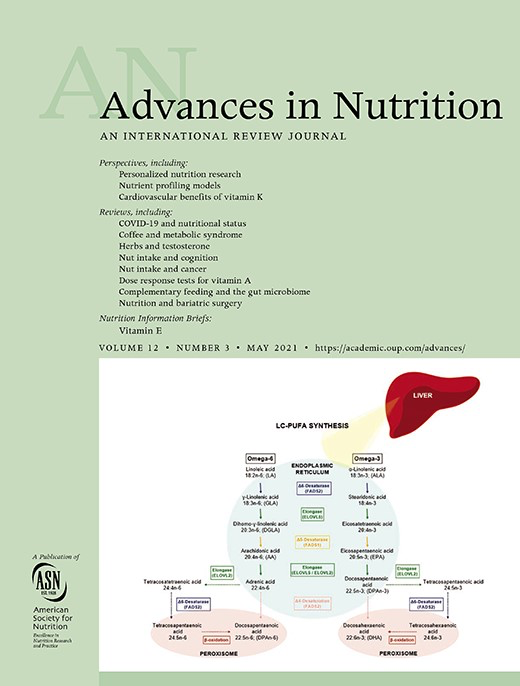
The Role of Prunes in Modulating Inflammatory Pathways to Improve Bone Health in Postmenopausal Women
2022 Sep Advances in Nutrition Damani JJ, De Souza MJ, VanEvery HL, Strock NCA, Rogers CJ
Systematic Review Review Article Prunes Bone Loss Bone Health PlumPrunes demonstrate potential as a dietary intervention to protect against, prevent and even reverse bone loss in osteoporosis, particularly in postmenopausal women.
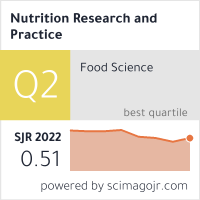
Effect of isoflavone supplementation on menopausal symptoms: a systematic review and meta-analysis of randomized controlled trials
2022 Jan Nutrition Research and Practice Kang I, Rim CH, Yang HS, Choe JS, Kim JY, Lee M
Meta-Analysis Systematic Review Isoflavone Menopause SoybeanIsoflavone supplementation noticeably impacts menopausal symptoms and hormonal changes in postmenopausal women.

Maximizing the Estrogenic Potential of Soy Isoflavones through the Gut Microbiome: Implication for Cardiometabolic Health in Postmenopausal Women
2022 Jan 27 Nutrients Leonard LM, Choi MS, Cross TWL
Review Article Gut Microbiota Soybean IsoflavoneEquol, a powerful estrogen-like compound derived from soy, could be key to better health in postmenopausal women if gut microbiome could be altered to facilitate its production.

Protective Roles of Honey in Reproductive Health: A Review
2021 Jun 01 Molecules Zaid SSM, Ruslee SS, Mokhtar MH
Review Article Honey MenopauseIn reproductive health, honey can improve infertility, protect the postmenopausal reproductive tract, prevent toxic effects, maintain sperm quality by restoring testosterone levels and treat vulvovaginal candidiasis infections.

Scientific Evidence Supporting the Beneficial Effects of Isoflavones on Human Health
2020 Dec 17 Nutrients Gómez-Zorita S, González-Arceo M, Fernández-Quintela A, Eseberri I, Trepiana J, Portillo MP
Review Article Hot Flushes Breast CancerIsoflavones, mainly found in soy-derived products, show beneficial effects on bone health, potential cancer risk reduction, and alleviation of menopausal symptoms, but not on cardiovascular risk.
Clinical Trials
Clinical trials are research studies that involve people and are conducted to evaluate the safety and efficacy of new treatments or interventions, such as drugs, medical devices, or behavioural therapies.

A dietary intervention for postmenopausal hot flashes: A potential role of gut microbiome. An exploratory analysis
2023 Dec Complementary Therapies in Medicine Kahleova H, Holtz DN, Strom N, La Reau A, Kolipaka S, Schmidt N, et al.
Randomised Controlled Trial Low Fat Diet Gut Microbiota SoybeanChanges in gut microbiome associated with a low-fat, vegan diet and cooked soybeans may reduce the frequency and severity of postmenopausal hot flashes.

Moderate consumption of freeze-dried blueberry powder increased net bone calcium retention compared with no treatment in healthy postmenopausal women: a randomized crossover trial
2023 Aug The American Journal of Clinical Nutrition Hodges JK, Maiz M, Cao S, Lachcik PJ, Peacock M, McCabe GP, et al.
Experimental Study Clinical Study Randomised Controlled Trial Bone Calcium BlueberryModerate consumption of blueberries may effectively reduce bone loss in healthy postmenopausal women.

Daily blueberry consumption for 12 weeks improves endothelial function in postmenopausal women with above-normal blood pressure through reductions in oxidative stress: a randomized controlled trial
2023 Jan Food & Function Woolf EK, Terwoord JD, Litwin NS, Vazquez AR, Lee SY, Ghanem N, et al.
Daily consumption of freeze-dried blueberry powder for 12 weeks improves endothelial function through reduced oxidative stress in postmenopausal women with above-normal blood pressure.
Randomised Controlled Trial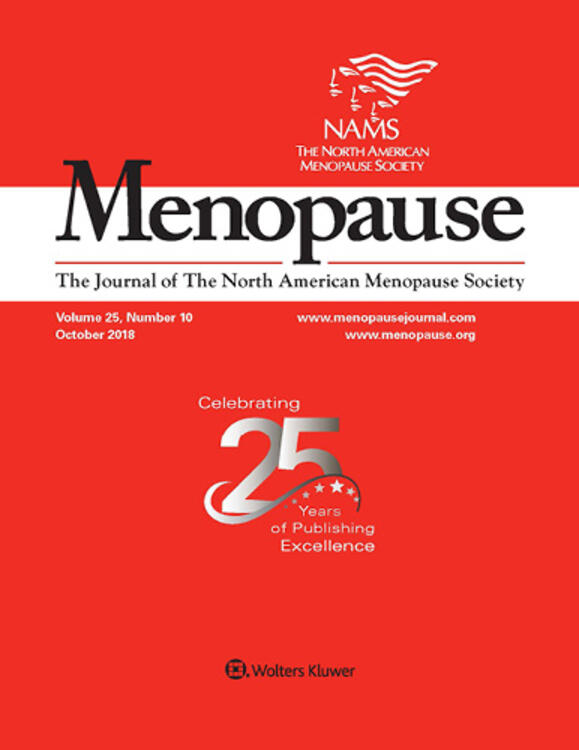
A dietary intervention for vasomotor symptoms of menopause: a randomized, controlled trial
2022 Oct 16 Menopause Barnard ND, Kahleova H, Holtz DN, Znayenko-Miller T, Sutton M, Holubkov R, et al.
Randomised Controlled Trial Low Fat Diet SoybeanA diet low in fat, vegan, and inclusive of daily cooked soybeans significantly reduces the frequency and severity of hot flashes in postmenopausal women.

Prunes preserve hip bone mineral density in a 12-month randomized controlled trial in postmenopausal women: the Prune Study
2022 Oct The American Journal of Clinical Nutrition De Souza MJ, Strock NCA, Williams NI, Lee H, Koltun KJ, Rogers C, et al.
Randomised Controlled Trial Bone Mineral Density PlumA daily intake of 50 grams of prunes can maintain hip bone density in postmenopausal women, potentially reducing hip fracture risks.
Study Protocols
Published study protocols are detailed plans that outline the objectives, methodology, statistical analyses, and organisation of a research study that have been made publicly available for others to review and use as a reference.
Presentation Slides

Randomised Controlled Trial
Changes in gut microbiome associated with a low-fat, vegan diet and cooked soybeans may reduce the frequency and severity of postmenopausal hot flashes.
Kahleova H, Holtz DN, Strom N, La Reau A, Kolipaka S, Schmidt N, Hata E, Znayenko-Miller T, Holubkov R, Barnard ND

Cohort Study
Long-term consumption of green tea can potentially lessen the risk of depression in postmenopausal women by decreasing inflammation and boosting estradiol levels.
Wan Z, Qin X, Tian Y, Ouyang F, Wang G, Wan Q

Experimental Study
Moderate consumption of blueberries may effectively reduce bone loss in healthy postmenopausal women.
Hodges JK, Maiz M, Cao S, Lachcik PJ, Peacock M, McCabe GP, McCabe LD, Cladis DP, Jackson GS, Ferruzzi MG, Lila MA, Bailey RL, Martin BR, Weaver CM

Clinical Study
Moderate beer intake does not show a protective effect against bone loss in early post-menopausal women.
Trius-Soler M, Tresserra-Rimbau A, Moreno JJ, Peris P, Estruch R, Lamuela-Raventós RM

Network Pharmacology
The primary ingredient of Shenling Baizhu powder, Rutin, can improve polycystic ovary syndrome and postmenopausal osteoporosis by binding to the aromatic hydrocarbon receptor, thus inhibiting cell apoptosis.
Liang J, Bao A, Ma H, Dong W, Li W, Wu X, Li H, Hou H, Chen Y, Fu J, Shao C

Randomised Controlled Trial
A diet low in fat, vegan, and inclusive of daily cooked soybeans significantly reduces the frequency and severity of hot flashes in postmenopausal women.
Barnard ND, Kahleova H, Holtz DN, Znayenko-Miller T, Sutton M, Holubkov R, Zhao X, Galandi S, Setchell KDR

Randomised Controlled Trial
A daily intake of 50 grams of prunes can maintain hip bone density in postmenopausal women, potentially reducing hip fracture risks.
De Souza MJ, Strock NCA, Williams NI, Lee H, Koltun KJ, Rogers C, Ferruzzi MG, Nakatsu CH, Weaver C

Systematic Review
Prunes demonstrate potential as a dietary intervention to protect against, prevent and even reverse bone loss in osteoporosis, particularly in postmenopausal women.
Damani JJ, De Souza MJ, VanEvery HL, Strock NCA, Rogers CJ
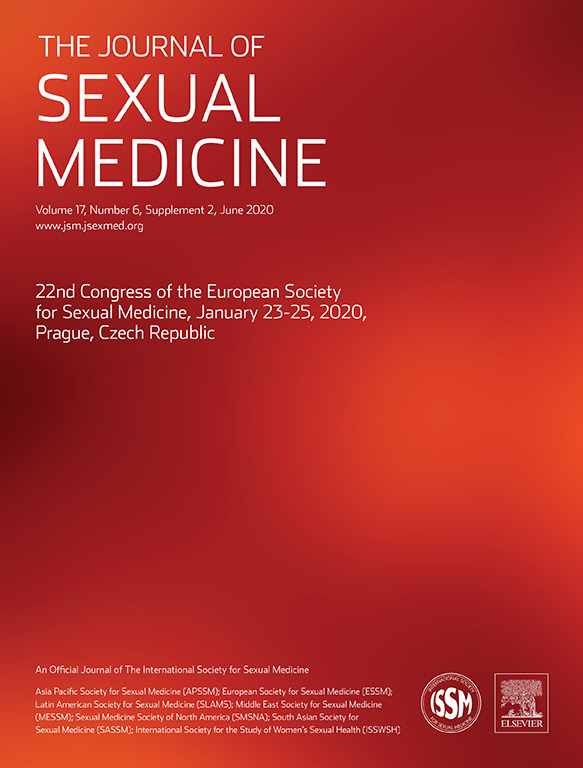
Randomised Controlled Trial
Chamomile vaginal gel effectively improved the sexual function of postmenopausal women, and can be a potential treatment option for those unable to undergo hormone therapy.
Bosak Z, Iravani M, Moghimipour E, Haghighizadeh M, Jelodarian P

Review Article
Equol, a powerful estrogen-like compound derived from soy, could be key to better health in postmenopausal women if gut microbiome could be altered to facilitate its production.
Leonard LM, Choi MS, Cross TWL

Meta-Analysis
Isoflavone supplementation noticeably impacts menopausal symptoms and hormonal changes in postmenopausal women.
Kang I, Rim CH, Yang HS, Choe JS, Kim JY, Lee M
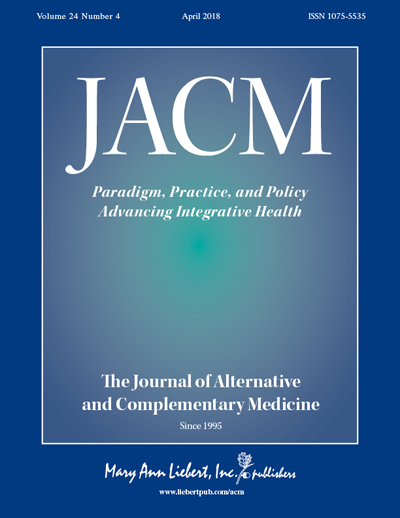
Randomised Controlled Trial
A combined treatment of soy and hop extract is a safe and effective alternative to traditional hormone replacement therapy for improving postmenopausal symptoms.
Kim HI, Kim MK, Lee I, Yun J, Kim EH, Seo SK

Clinical Study
Consuming soymilk-honey fermented with a specific type of probiotic significantly reduces osteocalcin levels, which may impact bone health in postmenopausal women.
Desfita S, Sari W, Yusmarini Y, Pato U, Zakłos-Szyda M, Budryn G

Randomised Controlled Trial
Moderate daily consumption of beer, both with and without alcohol, can significantly alleviate menopause-related symptoms and improve cardiovascular health in postmenopausal women.
Trius-Soler M, Marhuenda-Muñoz M, Laveriano-Santos EP, Martínez-Huélamo M, Sasot G, Storniolo CE, Estruch R, Lamuela-Raventós RM, Tresserra-Rimbau A

Review Article
In reproductive health, honey can improve infertility, protect the postmenopausal reproductive tract, prevent toxic effects, maintain sperm quality by restoring testosterone levels and treat vulvovaginal candidiasis infections.
Zaid SSM, Ruslee SS, Mokhtar MH

Randomised Controlled Trial
Lavandula angustifolia essential oil inhalation seemed to enhance overall sleep patterns, quality, and efficiency in postmenopausal women with insomnia.
dos Reis Lucena L, dos Santos-Junior JG, Tufik S, Hachul H
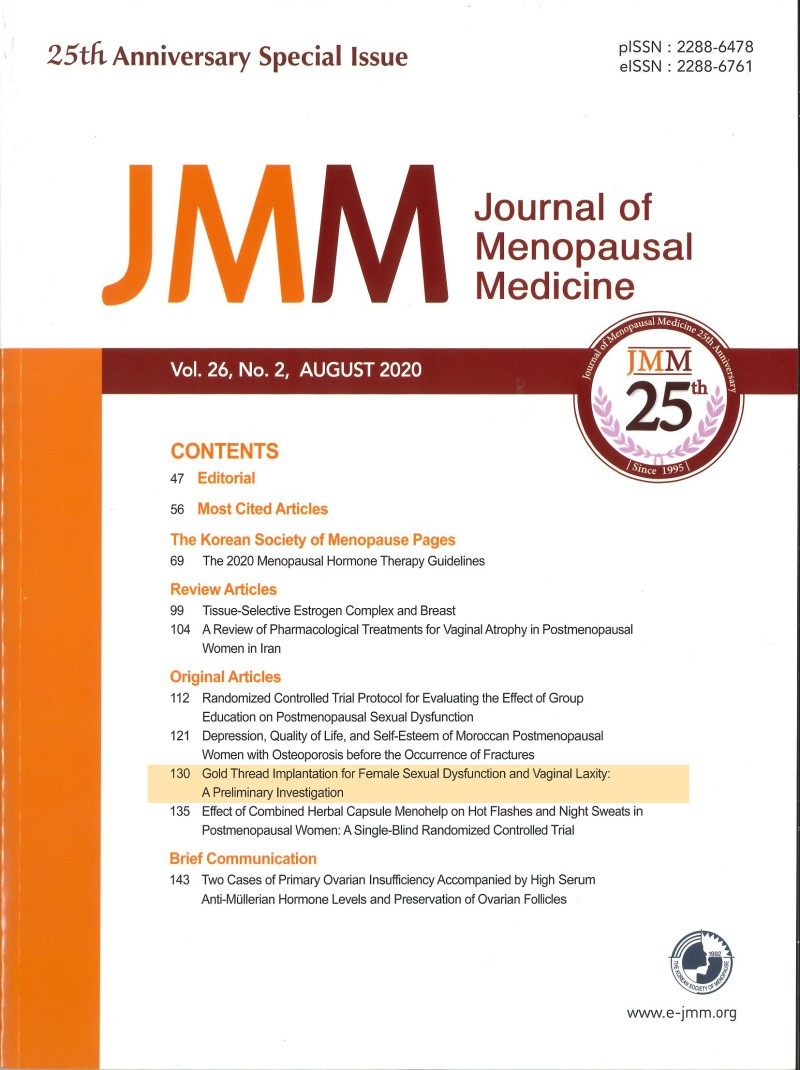
Clinical Study
Alkaline drinking water significantly improves spine bone density in postmenopausal women with osteoporosis, more than standard treatment alone.
Fasihi S, Fazelian S, Farahbod F, Moradi F, Dehghan M

Review Article
Isoflavones, mainly found in soy-derived products, show beneficial effects on bone health, potential cancer risk reduction, and alleviation of menopausal symptoms, but not on cardiovascular risk.
Gómez-Zorita S, González-Arceo M, Fernández-Quintela A, Eseberri I, Trepiana J, Portillo MP
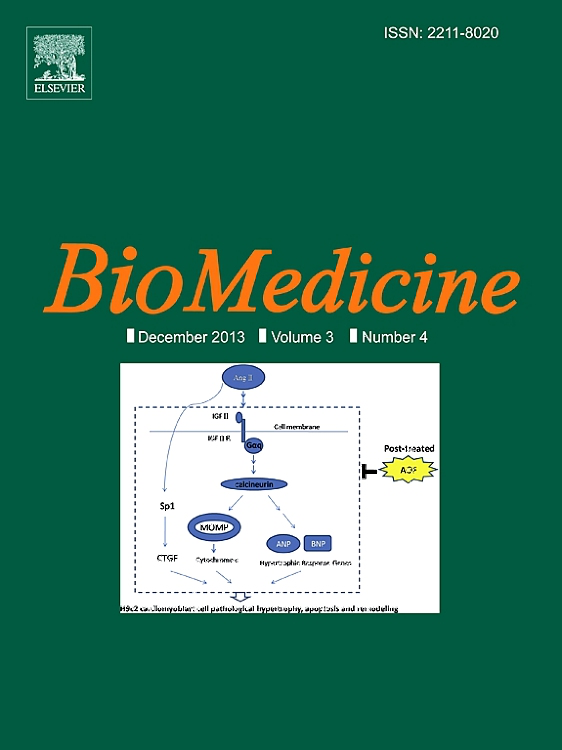
Randomised Controlled Trial
Consumption of jujube seed had a positive impact on improving the sleep quality of postmenopausal women and could be recommended as a useful herbal medication.
Mahmoudi R, Ansari S, Haghighizadeh MH, Maram NS, Montazeri S.

Systematic Review
Du Huo Ji Sheng Decoction monotherapy or combined with antiosteoporosis drugs may have beneficial effects for postmenopausal osteoporosis.
Li J, Wang W, Feng G, Du J, Kang S, Li Z, Zhu W, Shang H

Randomised Controlled Trial
Certain essential oils such as lavender, neroli, jasmine, roman chamomile, clary sage, and Indian sandalwood can potentially increase oxytocin concentrations in postmenopausal women.
Tarumi W, Shinohara K
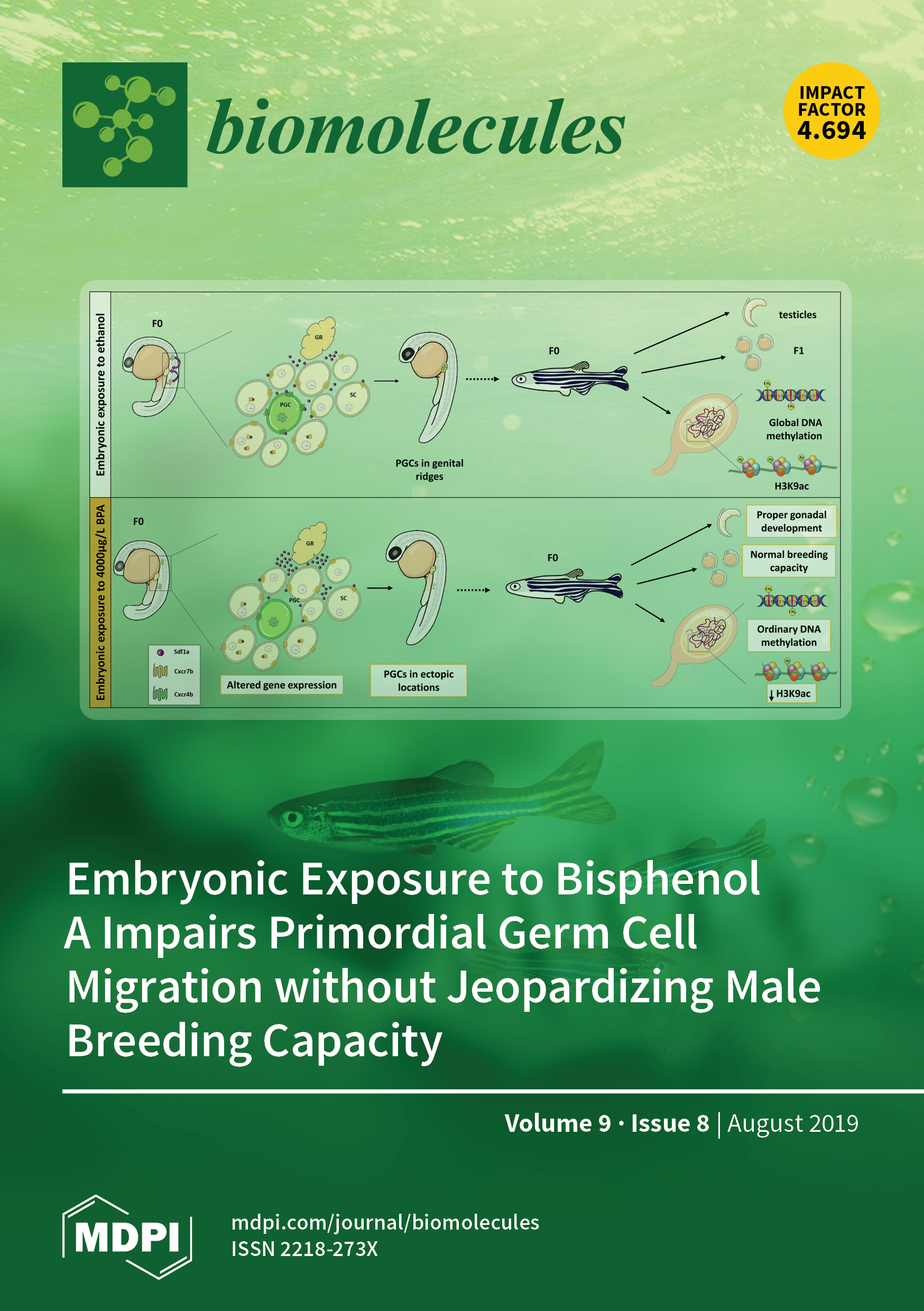
Review Article
Avocado and soybean unsaponifiables may effectively reduce inflammation and symptoms related to osteoarthritis, autoimmune diseases, and menopause.
Salehi B, Rescigno A, Dettori T, Calina D, Docea AO, Singh L, Cebeci F, Özçelik B, Bhia M, Dowlati Beirami A, Sharifi-Rad J, Sharopov F, C. Cho W, Martins N
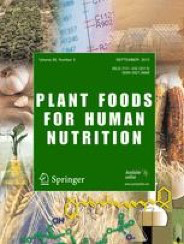
Results demonstrate that 100% watermelon juice is a palatable, effective means of increasing serum lycopene in older adult women, a group at risk for low carotenoid intake.
Ellis, A.C., Dudenbostel, T. & Crowe-White, K

Experimental Study
Higher iron levels after menopause appear to be risk factors for osteoporosis, and hormone hepcidin, which regulates iron, might be a potential therapeutic target for this condition.
Zhang P, Wang S, Wang L, Shan BC, Zhang H, Yang F, Zhou ZQ, Wang X, Yuan Y, Xu YJ

Practice Guideline
Long-chain omega-3 polyunsaturated fatty acids have various health benefits for postmenopausal women including reducing triglycerides and improving depression and psychotic symptoms.
Sánchez-Borrego R, von Schacky C, Osorio MJA, Llaneza P, Pinto X, Losa F, Navarro MC, Lubián D, Mendoza N
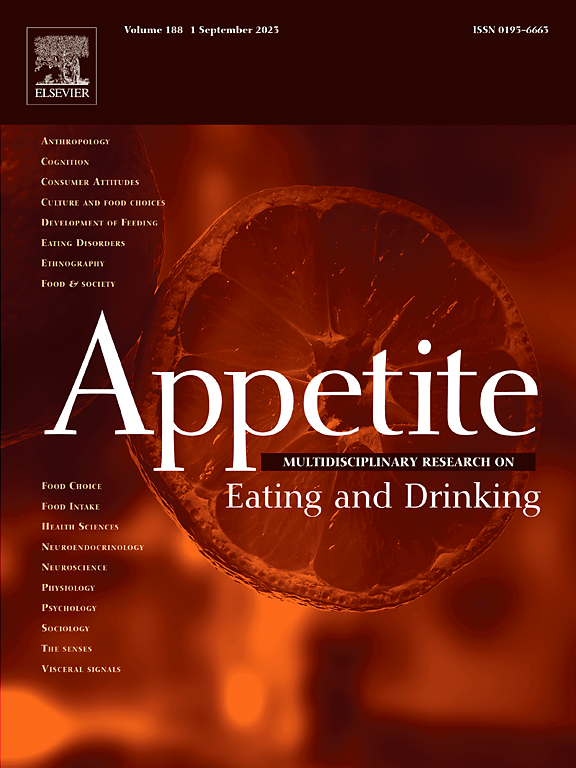
Randomised Controlled Trial
Dark chocolate reduces subsequent food intake in postmenopausal women more effectively than milk and white chocolate.
Marsh CE, Green DJ, Naylor LH, Guelfi KJ

Animal Study
Dried plums potentially prevent and reverse bone loss in postmenopausal women facing osteoporosis, offering a promising functional food therapy solution with long-lasting effects.
Arjmandi BH, Johnson SA, Pourafshar S, Navaei N, George KS, Hooshmand S, Chai SC, Akhavan NS

Review Article
Dried plums, or prunes, have potential to exert beneficial effects on bone health and may help in combating osteoporosis in postmenopausal women, if consumed as part of their recommended fruit intake.
Wallace T

Clinical Study
Blueberry intake for four weeks decreased levels of a biomarker for oxidative DNA damage in postmenopausal women with pre and early stage hypertension.
Johnson SA, Feresin RG, Navaei N, Figueroa A, Elam ML, Akhavan NS, Hooshmand S, Pourafshar S, Payton ME, Arjmandi BH
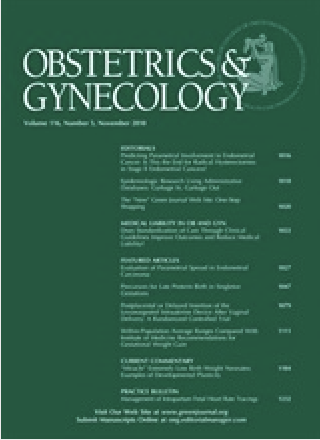
Systematic Review
Acupuncture is associated with a significant reduction in sleep disturbances in women experiencing menopause-related sleep disturbances.
Chiu, Hsiao-Yean RN, PhD; Hsieh, Yu-Jung RN, MSN; Tsai, Pei-Shan RN

Systematic Review
Acupuncture is associated with a significant reduction in sleep disturbances in women experiencing menopause-related sleep disturbances.
Chiu HY, Hsieh YJ, Tsai PS.
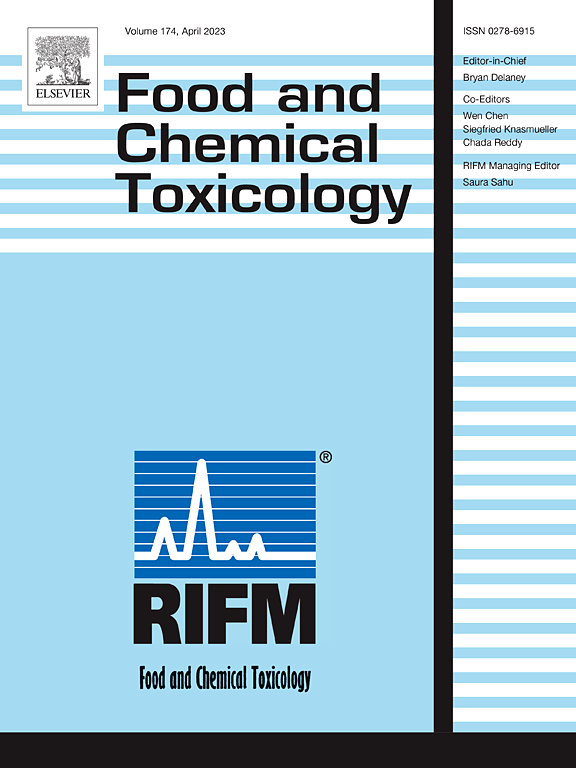
Randomised Controlled Trial
Green tea extract consumption can potentially cause mild adverse reactions, notably nausea, skin conditions, and increased alanine aminotransferase levels.
Dostal AM, Samavat H, Bedell S, Torkelson C, Wang R, Swenson K, Le C, Wu AH, Ursin G, Yuan JM, Kurzer MS

Systematic Review
Acupuncture can be safely applied as an alternative, adjuvant treatment in clinical practice to treat sleep disorders in postmenopausal women.
Bezerra AG, Pires GN, Andersen ML, Tufik S, Hachul H.
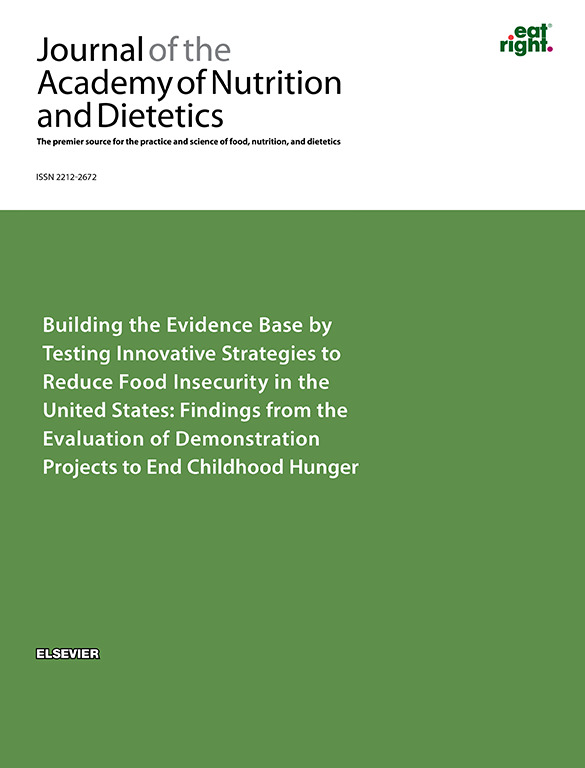
Clinical Study
Daily consumption of blueberries may decrease blood pressure and arterial stiffness in postmenopausal women due to increased nitric oxide production.
Johnson SA, Figueroa A, Navaei N, Wong A, Kalfon R, Ormsbee LT, Feresin RG, Elam ML, Hooshmand S, Payton ME, Arjmandi BH
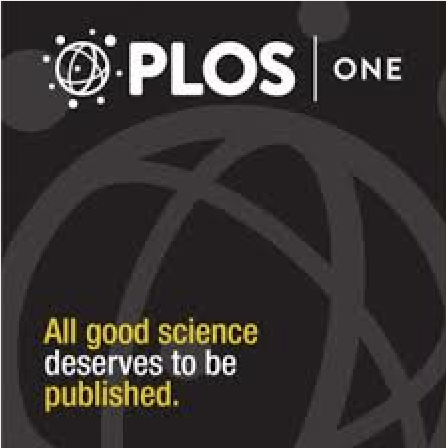
Animal Study
Dried plum intake uniquely improves bone density, promotes growth of vertebral trabecular bone, prevents bone loss in tibia, and positively adjusts bone metabolism.
Rendina E, Hembree KD, Davis MKR, Marlow D, Clarke SL, Halloran BP, Lucas EA, Smith BJ

Systematic Review
Soybean isoflavones, whether extracted or synthesized, prove significantly effective in reducing the frequency and severity of hot flashes in perimenopausal and postmenopausal women.
Taku K, Melby MK, Kronenberg F, Kurzer MS, Messina M
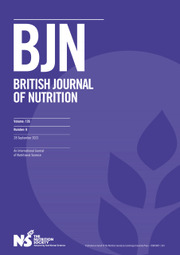
Randomised Controlled Trial
Dried plum consumption enhances bone mineral density in postmenopausal women, primarily by reducing the rate of bone turnover.
Hooshmand S, Chai SC, Saadat RL, Payton ME, Brummel-Smith K, Arjmandi BH
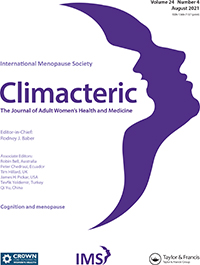
Randomised Controlled Trial
Pumpkin seed oil supplementation may increase good cholesterol levels, lower diastolic blood pressure, and alleviate menopausal symptoms in postmenopausal women.
Gossell-Williams M, Hyde C, Hunter T, Simms-Stewart D, Fletcher H, McGrowder D, Walters CA
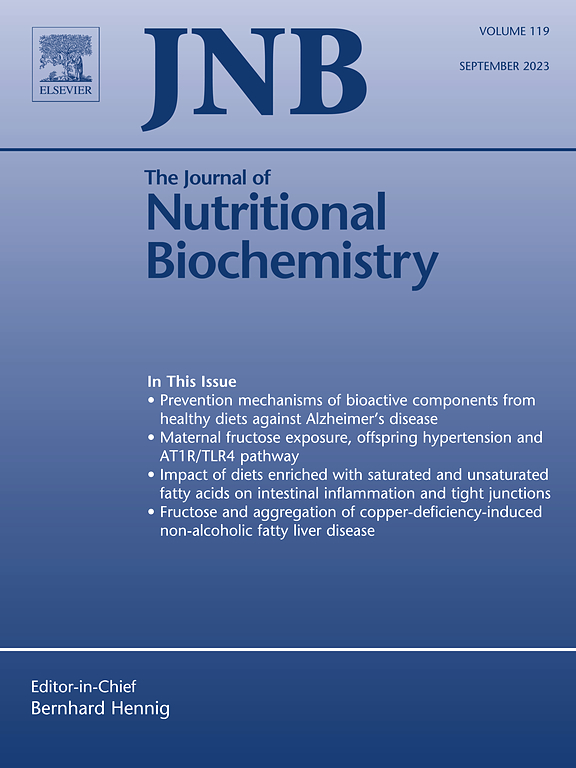
Experimental Study
Blueberry consumption can prevent bone loss and positively impact bone metabolism in ovariectomized rats.
Devareddy L, Hooshmand S, Collins JK, Lucas EA, Chai SC, Arjmandi BH
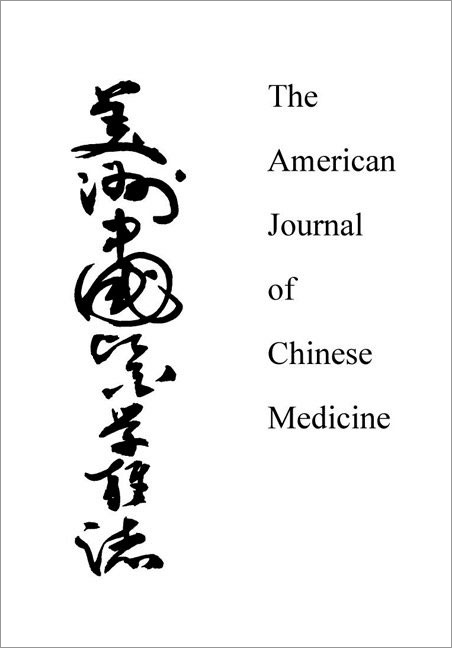
Randomised Controlled Trial
Gui-zhi-fu-ling-wan, a herbal therapy, depicts to be a viable alternative to hormone replacement therapy for treating hot flashes in post-menopausal women experiencing coldness in lower extremities.
Ushiroyama T, Ikeda A, Sakuma K, Ueki M
Executive Summary
Write an executive summary in the form of a blog article on the topic of "Research into Chinese medicine treatment for Postmenopausal" summarising the research below and using language that can be easily understood by patients and avoiding medical jargon using a professional and caring tone of voice.
Write an executive summary in the form of a blog article on the topic of "Researched Chinese medicine treatments for Postmenopausal" summarising the research below in an objective and easy to understand way, and using language that can be easily understood by patients. Group the article into Chinese medicine treatments first, followed by nutrition and other treatments. Avoid using medical jargon and use a professional and caring tone of voice.
Write me a concise but easy to understand executive summary on the topic of "Chinese medicine treatments for Postmenopausal" based on the following research that I will give you. Your summary should be 2 paragraphs long in Australian English spelling and include references to the studies.
A Randomised Controlled Trial published in 2023 in the journal Complementary Therapies in Medicine found that Changes in gut microbiome associated with a low-fat, vegan diet and cooked soybeans may reduce the frequency and severity of postmenopausal hot flashes. In this study, 84 postmenopausal women experiencing two or more moderate-to-severe hot flashes daily were randomly assigned to a low-fat, vegan diet with daily cooked soybeans or allowed to maintain their usual diet. Over a 12-week period, the frequency and severity of hot flashes were tracked using a mobile application. In 11 women from the group, gut microbiome was analyzed at the start and after 12 weeks of the dietary intervention, using deep shotgun metagenomic sequencing. The women who underwent gut microbiome testing experienced a substantial decrease in total hot flashes during the dietary intervention, and severe hot flashes disappeared entirely in this group. Alpha and beta diversity within the microbiome showed no significant difference in the intervention group between baseline and the end of the 12 weeks. Interestingly, adjustments in the relative abundance of certain bacterial strains, notably Porphyromonas and Prevotella corporis, were linked with the reduction in severe day hot flashes, while changes in the relative abundance of Clostridium asparagiforme were associated with a reduction in total severe hot flashes and severe night hot flashes.
A Cohort Study published in 2023 in the journal Nutrients found that Long-term consumption of green tea can potentially lessen the risk of depression in postmenopausal women by decreasing inflammation and boosting estradiol levels. In the study, researchers performed an analysis on a tea-producing village, incorporating 386 postmenopausal women in the investigation, who participated either as green tea consumers or non-drinkers (control group). The level of estradiol, inflammation markers, sleep quality, and depression symptoms were measured to uncover any correlations. The results reflected significant disparities between the tea-drinking and control groups in terms of depression and insomnia levels, BMI, inflammation levels, and estradiol quantities. By appraising these outcomes, it was found that green tea intake could quell the likelihood of depression via its impact on sleep, inflammation, and estradiol levels. The risk of depression was consequently seen as reduced among postmenopausal women engaging in regular consumption of green tea.
A Experimental Study published in 2023 in the journal The American Journal of Clinical Nutrition found that Moderate consumption of blueberries may effectively reduce bone loss in healthy postmenopausal women. The research began with a blueberry dose-response study with ovariectomized rats, used as an experimental model simulating postmenopausal conditions. These rats were fed with various doses of blueberry powder, with the aim to identify an optimal dosage for bone calcium retention. The experiment then translated to a human study where fourteen healthy women, all more than four years past menopause, were examined. A baseline was established, and then each participant was provided with varying dosages of freeze-dried blueberry powder equivalent to defined portions of fresh blueberries, to be consumed daily for a series of six weeks at a time. Tracing calcium in the urine was employed as a method to monitor bone calcium balances in both the rat and human trials. The collected data indicated that both the rat and human subjects benefited from blueberry interventions at lower doses. Higher doses, however, showed no such beneficial impact on bone calcium balance. In human subjects, net bone calcium retention increased with low and medium doses of blueberry consumption. Increased urinary excretion of hippuric acid, a metabolite of the antioxidants present in blueberries, was observed with an increase in blueberry consumption. No significant associations were found between bone resorption biomarkers and the interventions implemented in the study.
A Clinical Study published in 2022 in the journal Frontiers in Nutrition found that Moderate beer intake does not show a protective effect against bone loss in early post-menopausal women. In a 2-year controlled clinical intervention study, 31 postmenopausal women were divided into three groups: 15 consumed beer with alcohol daily, 6 consumed non-alcoholic beer daily, and 10 refrained from consuming any alcohol, non-alcoholic beer, and hop-related products. All participants underwent baseline and follow-up assessments, wherein plasma and urine samples were collected for biochemical testing, and data about their medical history, diet, and exercise habits were also gathered. The comprehensive, detailed examination involved the use of dual-energy X-ray absorptiometry to determine bone mineral density and trabecular bone score. Furthermore, yearly determinations of bone formation and bone resorption markers were made. The study showed that the markers of bone formation had indeed increased in the groups consuming beer with alcohol and non-alcoholic beer compared to the control group over the course of 2 years. However, there were no significant changes noted in the bone mineral density and trabecular bone score among the three groups throughout the study period. These findings contradict the hypothesis that moderate beer consumption could have protective effects against bone loss in early post-menopausal women.
A Network Pharmacology published in 2022 in the journal PeerJ found that The primary ingredient of Shenling Baizhu powder, Rutin, can improve polycystic ovary syndrome and postmenopausal osteoporosis by binding to the aromatic hydrocarbon receptor, thus inhibiting cell apoptosis. In this study, the active ingredients of Shenling Baizhu powder were identified using a Chinese medicine database, and Rutin emerged as having the highest binding affinity to the aromatic hydrocarbon receptor. This was determined through molecular dynamics simulation, eliminating any ambiguity. Then, to assess the efficacy of Rutin, it was used therapeutically on ovarian granulosa and osteoblast cell lines, with varying concentrations to determine the optimum dosage. Analyzing the results showed that the introduction of Rutin to both ovarian granulosa and osteoblast cell lines resulted in modified protein expressions, indicative of cellular adjustments. Specifically, expressions of the apoptosis-associated protein and the aromatic hydrocarbon receptor, among others, were decreased while the expression of protein Bcl-2 was increased. Moreover, cell proliferation was seen to significantly accelerate in both cell lines after treatment with Rutin.
A Randomised Controlled Trial published in 2022 in the journal Menopause found that A diet low in fat, vegan, and inclusive of daily cooked soybeans significantly reduces the frequency and severity of hot flashes in postmenopausal women. The methodology used involved the selection of 84 postmenopausal women who reported at least two moderate-to-severe hot flashes. These women were randomly divided into two cohorts, one prescribed the dietary intervention of a low-fat, vegan diet coupled with daily servings of cooked soybeans and a control group which did not alter their diet. Over a 12-week period, a mobile application was used to track hot flashes in terms of frequency and severity. Further, the participants’ vasomotor, psychosocial, physical, and sexual symptoms were assessed using the Menopause-Specific Quality of Life questionnaire. In some participants, the presence of urinary equol, a compound formed in the gut after consuming soy, was measured following the intake of the specified amount of soybeans for 3 days. In discussing the results, a remarkable decrease was noted in the frequency and severity of hot flashes experienced by the group assigned the dietary intervention versus those in the control group. In addition, after 12 weeks, half of the participants adhering to the vegan diet and daily soy intake reported complete cessation of moderate-to-severe hot flashes. Furthermore, notable decreases were reported in the intervention group in menopause-specific quality of life domains including vasomotor, physical, and sexual. Neither the season nor the participant's ability to produce equol played a notable role in these improvements.
A Randomised Controlled Trial published in 2022 in the journal The American Journal of Clinical Nutrition found that A daily intake of 50 grams of prunes can maintain hip bone density in postmenopausal women, potentially reducing hip fracture risks. This research was conducted through a single-center, parallel-arm, randomized controlled trial over the course of a year. Postmenopausal women were randomly assigned into three groups - control, 50 grams of prunes, and 100 grams of prunes - and their bone mineral density (BMD) was assessed every 6 months. Secondary measurements included an observation of changes in bone biomarkers. Compliance and retention of participants were high particularly at the 50-gram dosage. In assessing the effects of prunes on bone health, the findings showed a distinct interaction between the amount of prune intake and bone mineral density in the hip region. Specifically, it indicated that consumption of 50 grams of prunes daily led to a preservation of hip BMD after 6 months, an effect which was still apparent after a year. Despite a higher dropout rate and less impact on BMD, the 100-gram prune group, when combined with the 50-gram group, presented stability in the FRAX score, which measures the risk of hip fractures.
A Systematic Review published in 2022 in the journal Advances in Nutrition found that Prunes demonstrate potential as a dietary intervention to protect against, prevent and even reverse bone loss in osteoporosis, particularly in postmenopausal women. Using sixteen preclinical trials with in vivo rodent models of osteopenia or osteoporosis, researchers investigated the effect of dietary supplementation with prunes. The research shows prunes' osteoprotective capabilities, preventing, reversing bone loss, and exerting anti-inflammatory and antioxidant effects. The prunes or their polyphenol extracts showed properties that decreased malondialdehyde and NO secretion and increased antioxidant enzyme expression. Two clinical trials further investigated prune consumption (50-100 g/d for 6-12 months) on bone health in postmenopausal women. The results of the studies revealed the promising outcome of improved bone mineral density and bone biomarker due to the consumption of dried plums. However, the effect of prunes on oxidative stress and inflammatory mediators remains less understood. The study hence emphasizes the need to investigate prunes' role in modulating the inflammatory and immune pathways related to bone health.
A Randomised Controlled Trial published in 2022 in the journal The Journal of Sexual Medicine found that Chamomile vaginal gel effectively improved the sexual function of postmenopausal women, and can be a potential treatment option for those unable to undergo hormone therapy. The structured methodology involved a randomized, double-blind clinical trial, where 96 postmenopausal women with known sexual dysfunction were divided equally into three groups. Each group respectively received chamomile vaginal gel, conjugated estrogen vaginal cream, and placebo vaginal gel, for 12 weeks. The frequency of application varied over the course of the weeks. Measurements were made using the Female Sexual Function Index (FSFI) before and after the intervention. Data analysis implied chi-square, one-way ANOVA, descriptive statistics, and paired t-tests. Despite the study's duration of 12 weeks, no follow-up was done past this time frame. The study also recorded experiences of side effects, with a few women reporting a burning sensation. The results showed substantial improvement in all six sexual function domains and the total FSFI score for those women using chamomile vaginal gel when compared to the placebo. The chamomile gel showed no significant difference with the estrogen cream, except in the areas of orgasm and sexual satisfaction. This places chamomile vaginal gel as a considerable alternative for treating sexual dysfunction in postmenopausal women, especially for those who have contraindications to hormone therapy.
A Review Article published in 2022 in the journal Nutrients found that Equol, a powerful estrogen-like compound derived from soy, could be key to better health in postmenopausal women if gut microbiome could be altered to facilitate its production. The methodology of this research involved looking closely at the properties and actions of equol, a metabolite of the soy isoflavone daidzein. This substance is produced through the process of intestinal bacterial metabolism, but the ability to produce it is not present in over half of the human population due to the absence of specific equol-producing bacteria in the gastrointestinal tract. Given that the make up of the gut microbiome varies from person to person, understanding the effects of equol and daidzein in the human body has been a complex task. Furthermore, the fact that rodents easily produce equol complicates the matter, as findings from rodent models may not directly apply to humans. While interpreting the results, it was found that equol, due to its strong estrogenic activity, could potentially be an excellent means to manage postmenopausal symptoms and overall health. However, the ability to produce equol varies significantly among people, based on the bacterial microflora of their gut. Therefore, the benefits of equol could potentially be amplified by finding effective methods to manipulate the gut microbiome to foster equol production, a strategy that could lead to improved health outcomes for postmenopausal women.
A Meta-Analysis published in 2022 in the journal Nutrition Research and Practice found that Isoflavone supplementation noticeably impacts menopausal symptoms and hormonal changes in postmenopausal women. In order to examine isoflavones effects on menopausal symptoms and the associated hormonal alterations, a systematic review and meta-analysis were conducted. To do this, the PubMed and EMBASE databases were used, but the selected studies were restricted to random controlled trials (RCTs) assessing isoflavone supplementation's impact on menopausal symptoms. Overall, 11 studies were chosen for the final quantitative evaluation, and the isoflavone intervention amount varied among these studies. The Meta-analysis displayed that supplementing isoflavones meaningfully increased estradiol levels and the Kupperman index (a composite scoring of multiple menopausal symptoms intensity). Yet, there were no significant impacts observed on hot flashes, or the release of two specific hormones: follicle-stimulating hormone and luteinizing hormone. It should be noted that there was a significant inconsistency in estradiol levels and Kupperman index findings among different studies.
A Randomised Controlled Trial published in 2021 in the journal The Journal of Alternative and Complementary Medicine found that A combined treatment of soy and hop extract is a safe and effective alternative to traditional hormone replacement therapy for improving postmenopausal symptoms. In this double-blinded, randomized controlled trial, researchers administered a combination of soy and hop extract to 78 postmenopausal women with moderate to severe symptoms. Conducted in the gynecological outpatient clinic of a tertiary hospital, all subjects had modified Kupperman Menopausal Index (KMI) scores over 20. Participants either received the treatment or a placebo, as the researchers sought to evaluate their menopausal symptoms over the course of 12 weeks. The changes to their menopausal symptoms were tracked through self-reported KMI scores at multiple intervals. They also gauged measures such as the serum levels of bone metabolism markers, ultrasonographic parameters, hormone profiles, and safety assurances, amongst others. In terms of test results, after undergoing the 12-week treatment, the group receiving the combined soy and hop extract saw more considerable improvements in their symptoms compared to the placebo group. They particularly noted notable enhancements in conditions like fatigue, paresthesia, arthralgia, and myalgia, palpitations, and vaginal dryness. Lowered increases in urine N-telopeptide, a biomarker for bone metabolism, were observed in treatment group participants aged 50 and older. Meanwhile, endometrial thickness and hormonal profiles did not display any significant shifts in either group. Importantly, throughout the trial, no harmful side effects or events arose, speaking to the safety of the treatment.
A Clinical Study published in 2021 in the journal Nutrients found that Consuming soymilk-honey fermented with a specific type of probiotic significantly reduces osteocalcin levels, which may impact bone health in postmenopausal women. The researchers conducted a 90-day pre-post quasi-experimental study with control design on 54 postmenopausal women who were divided into three groups. The first group consumed regular soymilk, the second group consumed soymilk-honey fermented with a specific sub species of probiotics, and the third group consumed soymilk-honey fermented with a different type of probiotics. Each participant consumed 100 mL of their respective drink per day for 90 days. Measurements of blood serum osteocalcin were taken at the start and end of the study, alongside assessments of each participant's overall health status, including total cholesterol, blood glucose, and uric acid levels. In terms of results, it was observed that the group consuming the soymilk-honey fermented with the particular probiotic showed a significant decrease in their osteocalcin levels after the 90-day period. This indicates that this specific fermented soymilk-honey beverage might have a positive impact on bone health in postmenopausal women.
A Randomised Controlled Trial published in 2021 in the journal Nutrients found that Moderate daily consumption of beer, both with and without alcohol, can significantly alleviate menopause-related symptoms and improve cardiovascular health in postmenopausal women. In the research, 37 postmenopausal women were voluntarily put through a parallel controlled intervention trial, involving three study groups. The trial involved 16 women consuming beer with alcohol (330 mL/day), 7 women consuming non-alcoholic beer (660 mL/day), and 14 women as control. In assessing the results, it was found that both interventions, beer with and without alcohol, substantially reduced the severity of menopause-associated symptoms. Specifically, beer with alcohol positively contributed to reducing psychological discomforts linked to menopause when compared to the control group. It was additionally noted that these beneficial effects could be traced to the non-alcoholic section of the beer, as the sex hormone profile remained largely unchanged across the different study groups. In addition, the group that consumed non-alcoholic beer conveyed improvements in their lipid profiles and exhibited lower blood pressure levels, indicating better cardiovascular health.
A Review Article published in 2021 in the journal Molecules found that In reproductive health, honey can improve infertility, protect the postmenopausal reproductive tract, prevent toxic effects, maintain sperm quality by restoring testosterone levels and treat vulvovaginal candidiasis infections. Honey has a highly complex chemical and biological composition that consists of various essential bioactive compounds, enzymes, amino and organic acids, acid phosphorylase, phytochemicals, carotenoid-like substances, vitamins and minerals. Reproductive health and fertility rates have declined in the last 30 years. Therefore, this review aimed to highlight the protective role of honey as a potential therapeutic in maintaining reproductive health. The main role of honey is to enhance fertility and treat infertility problems by acting as an alternative to hormone replacement therapy for protecting the vagina and uterus from atrophy, protecting against the toxic effects of xeno-oestrogenic agents on female reproductive functions and helping in the treatment of gynaecological disorders, such as vulvovaginal candidiasis infection, that affect women’s lives.
A Randomised Controlled Trial published in 2021 in the journal Complementary Therapies in Medicine found that Lavandula angustifolia essential oil inhalation seemed to enhance overall sleep patterns, quality, and efficiency in postmenopausal women with insomnia. Methodology: 35 postmenopausal women, clinically diagnosed with insomnia, were recruited and divided into two groups - an Aroma Group and a Placebo Group - for a double-blind, randomized controlled trial. Over 29 days, participants in the Placebo Group inhaled sunflower oil, while participants in the Aroma Group inhaled lavender oil. Both groups were given sleep hygiene guidelines before embarking on the trial and received follow-up on a weekly basis. Evaluations were performed both pre- and post-intervention. Discussion of Results: No significant differences were noted between the two groups in terms of sleep quality. However, certain tendencies were observed. Aroma Group participants showed a noteworthy reduction in the time taken to fall asleep, depression levels and postmenopausal symptoms such as hot flashes. Moreover, polysomnography data showed increased sleep efficiency in comparison to initial levels. The improvement in sleep quality over time was observed in both groups, indicating that sleep hygiene instruction and weekly follow-ups played a significant role in influencing sleep patterns and quality.
A Clinical Study published in 2021 in the journal Journal of Menopausal Medicine found that Alkaline drinking water significantly improves spine bone density in postmenopausal women with osteoporosis, more than standard treatment alone. The study involved 100 postmenopausal women with osteoporosis, equally divided into an intervention group and a control group, each consisting of 50 women. The intervention group received calcium D daily, 1.5 liters of alkaline water daily with a pH of 8.6 ± 0.3, and a weekly Osteofos tablet (70 mg). The control group received only calcium D and the Osteofos tablet. The study duration was three months, and bone mineral density was measured using bone densitometry for the femur and spine, both before and after the intervention. After the three-month intervention, both groups showed significant increases in the mean T-scores of the femur and spine bones. Notably, the increase in the spine T-scores was significantly greater in the intervention group compared to the control group. However, there were no significant differences in the changes in the femur T-scores between the two groups.
A Review Article published in 2020 in the journal Nutrients found that Isoflavones, mainly found in soy-derived products, show beneficial effects on bone health, potential cancer risk reduction, and alleviation of menopausal symptoms, but not on cardiovascular risk. The study examined the potential uses of isoflavones, phenolic compounds mostly found in soy-derived foods and several vegetables. Isoflavones are seen as potential alternative therapies for hormone-dependent disorders due to their near-identical chemical structure to estradiol. These disorders include certain cancers, cardiovascular diseases, and menopausal symptoms. The investigation involved reviewing existing scientific evidence to evaluate the potential effects of isoflavones on these diseases and health concerns. In assessing the results, the review found evidence suggesting that isoflavones could have a beneficial effect on postmenopausal women's bone health, contributing to osteoporosis prevention and treatment. However, observed study results were not entirely conclusive due to discrepancies among study designs. Contrarily, there appeared to be no significant protective effect against cardiovascular risk with soy isoflavones. In terms of cancer, preliminary observations suggested that isoflavones may reduce some types of cancer risks, such as breast and endometrial cancer. Lastly, isoflavones showed a potential role in reducing hot flushes associated with menopause. Concerning safety, most common adverse effects were mild and observed at the gastrointestinal level.
A Randomised Controlled Trial published in 2020 in the journal BioMedicine found that Consumption of jujube seed had a positive impact on improving the sleep quality of postmenopausal women and could be recommended as a useful herbal medication. The results show that the medicinal jujube seed capsule improved the sleep quality of postmenopausal women. Thus, it could be recommended as a safe plant with fewer complications compared to chemical and hormone drugs for the treatment of sleep disorders. Also, during the period of consuming jujube seed capsule in this study, except for a few cases of gastrointestinal disorders and in similar studies with this herbal medicine, consumers have reported no specific side effects. Therefore, considering that about one-third of adults in the world suffer from sleep disorders, the high prevalence of sleep disorders in postmenopausal women, and the lower cost of treatment by jujube seed capsule compared to other treatments, it is suggested implementing this treatment as a useful method in improving sleep quality in postmenopausal women.
A Systematic Review published in 2020 in the journal Evidence-Based Complementary and Alternative Medicine found that Du Huo Ji Sheng Decoction monotherapy or combined with antiosteoporosis drugs may have beneficial effects for postmenopausal osteoporosis. Eight studies were enrolled with 650 participants. DHJSD alone or with other interventions had a significant effect on bone mineral density of the lumbar spine, E2, and clinical effectiveness. However, no effect at bone Gla protein was seen.
A Randomised Controlled Trial published in 2020 in the journal The Journal of Alternative and Complementary Medicine found that Certain essential oils such as lavender, neroli, jasmine, roman chamomile, clary sage, and Indian sandalwood can potentially increase oxytocin concentrations in postmenopausal women. In this study, fifteen postmenopausal women were subjected to the effects of ten different essential oils one at a time. The oils exposed to included rose otto, sweet orange, lavender, neroli, frankincense, jasmine absolute, ylang ylang, roman chamomile, clary sage, and Indian sandalwood. Initially, they were exposed to a control for 20 minutes, followed by exposure to an essential oil for 20 minutes. Each woman was exposed to only a single kind of essential oil per day. Saliva was collected immediately before and after both control exposure and essential oil exposure. The oxytocin levels in the saliva were then measured. The findings revealed an increase in salivary oxytocin concentrations following exposure to six out of the ten essential oils. Specifically, lavender, neroli, jasmine absolute, roman chamomile, clary sage, and Indian sandalwood were associated with a significant increase in salivary oxytocin when compared to the control odor. This study implies that olfaction stimulation with the listed essential oils might help counter the reduction of muscle mass and function caused by aging in women.
A Review Article published in 2020 in the journal Biomolecules found that Avocado and soybean unsaponifiables may effectively reduce inflammation and symptoms related to osteoarthritis, autoimmune diseases, and menopause. The research involves summarizing various studies on the biological effects of the avocado-soybean unsaponifiables (ASU), highlighting its potent anti-inflammatory properties. The extracted ASU are a combination of elements derived from the fruits and seeds of avocados and soybeans. To understand its impact, the researchers categorized the applications of ASU in treating different conditions such as osteoarthritic pain, hip and knee osteoarthritis, autoimmune diseases, and menopause-related symptoms amongst postmenopausal women. The discussion revealed significant links between avocado and soybean unsaponifiables and symptom improvement in areas of osteoarthritic pain, autoimmune conditions, and postmenopause. Particularly notable is the ASU mixture's potential role as an adjunct treatment, meaning it’s meant to supplement primary treatments for such conditions. Its benefits were not only limited to physical reduction of inflammation and associated pain, but also improved mood and quality of life for postmenopausal women by significantly reducing menopause-related symptoms. The study also delves into the safety, toxicological considerations, and regulatory practices related to the use of ASU.
A published in 2019 in the journal Plant Foods for Human Nutrition found that Results demonstrate that 100% watermelon juice is a palatable, effective means of increasing serum lycopene in older adult women, a group at risk for low carotenoid intake. Watermelon is one of the few food sources of dietary lycopene. Because heat treatment increases lycopene bioavailability, ingestion of watermelon in pasteurized juice form may be an optimal delivery vehicle to increase lycopene levels in older adults. However, due to its lipophilic nature, there are concerns that co-ingestion of dietary fat may be necessary for efficient intestinal absorption of lycopene. Thus, this feasibility study aimed to examine the effects of a one-time dose of 100% pasteurized watermelon juice on circulating lycopene concentrations of postmenopausal women after a 10-h overnight fast. Blood was sampled from eight women before and 2 h after ingestion of 360 ml of juice, and serum lycopene was measured by ultra-high performance liquid chromatography. Circulating lycopene levels increased by three-fold (p < 0.001) with increases observed for every participant.
A Experimental Study published in 2018 in the journal Journal of Molecular Endocrinology found that Higher iron levels after menopause appear to be risk factors for osteoporosis, and hormone hepcidin, which regulates iron, might be a potential therapeutic target for this condition. In the study, researchers applied genetic modification techniques to alter the production of endogenous hormone hepcidin in a mouse model, aiming to affect the iron levels in the body. Making use of both knockout and overexpression murine models, researchers focused specifically on the correlational aspects of hepcidin levels and bone loss. Further to that, the impact of iron overload on reactive oxygen species (ROS) activity was tested, as well as its effect on the slowed down work of primary osteoblasts. On the other hand, the effect of iron depletion was observed, presented as the reversed phenomenon through inhibiting the functions of the primary osteoclasts. Through this work, researchers investigated how iron accumulation interferes with general bone health in postmenopausal conditions. They further verified the 'Huang's hypothesis' - proposed in previous studies - about the potential therapeutic value of hepcidin for postmenopausal osteoporosis.
A Practice Guideline published in 2017 in the journal Maturitas found that Long-chain omega-3 polyunsaturated fatty acids have various health benefits for postmenopausal women including reducing triglycerides and improving depression and psychotic symptoms. A panel of experienced experts from the Spanish Menopause Society embarked to establish a comprehensive set of recommendations for the intake of long-chain omega-3 polyunsaturated fatty acids by postmenopausal women. This was steered based on the best available evidence and research. It was especially noted that the consumption of these fatty acids, at doses higher than 3 grams per day, proved to significantly decrease the levels of triglycerides in the body. The results obtained from this study are promising and underline the potential health benefits of long-chain omega-3 polyunsaturated fatty acids for postmenopausal women. Alongside reducing triglyceride levels, they also contribute to antiarrhythmic effects, reduction in blood pressure, and improvements in depressive and psychotic symptoms. Furthermore, it was noted that their consumption does not increase the risk of cancer in these women. The potential of these fatty acids in providing relief from menopause symptoms and osteoporosis was also explored, yielding positive indications.
A Randomised Controlled Trial published in 2017 in the journal Appetite found that Dark chocolate reduces subsequent food intake in postmenopausal women more effectively than milk and white chocolate. In the study, 14 healthy postmenopausal women participated in three separate experimental trials done in a counterbalanced order. Each trial was conducted at a specific time and was spaced one week apart. The women's food intake, appetite perceptions, mood, and levels of certain appetite-related peptides were measured and analyzed following their consumption of an isocaloric amount of dark chocolate (80% cocoa), milk chocolate (35% cocoa), and white chocolate (cocoa butter). The results indicated a significant decrease in food intake after consuming dark chocolate compared to milk and white chocolate. Furthermore, blood glucose and insulin levels were found to temporarily increase after consuming milk and white chocolate, unlike in the case of dark chocolate. In addition, the consumption of high cocoa content chocolate, like dark and milk chocolate, elevated the pancreatic polypeptide, which differed from the response to white chocolate. The conditions had no significant effect on active ghrelin or leptin hormones, and the mood of the participants remained largely unaffected.
A Animal Study published in 2017 in the journal Nutrients found that Dried plums potentially prevent and reverse bone loss in postmenopausal women facing osteoporosis, offering a promising functional food therapy solution with long-lasting effects. The methodology focused on examining the influence of dried plum in preventing and reversing bone loss related to osteoporosis. Two populations were studied: an ovariectomized rat model, which simulates the condition in postmenopausal women, and actual osteopenic postmenopausal women. The subjects were given measured servings of dried plums and their bone mass and structure were analyzed over a certain period. The researchers also attempted to understand the possible mechanisms through which dried plum exerts its bone-protective effects. In terms of results, evidence suggested that dried plum effectively retarded bone loss in both the rat model and human subjects. An intriguing observation was from a follow-up study of the one-year clinical trial conducted five years earlier. Women who had been in the trial consuming 100 g dried plum per day were found to have retained bone mineral density more efficiently than comparative controls. Dried plum's beneficial effect was hypothesised to originate from its bioactive compounds. The overall findings strongly advocate dried plum as a functional food therapy for preventing osteoporosis in postmenopausal women.
A Review Article published in 2017 in the journal Nutrients found that Dried plums, or prunes, have potential to exert beneficial effects on bone health and may help in combating osteoporosis in postmenopausal women, if consumed as part of their recommended fruit intake. The research process involved a comprehensive review of scientific literature available in the PubMed database up until January 24, 2017. This literature included cell studies, animal studies, population and clinical studies that examined effects of dried plums or their extracts on markers of bone health. In total, 24 research papers were reviewed and their findings are summarized. Discussing the results, animal, cell, and clinical studies suggest that dried plums or their extracts positively impact bone formation and limit bone breakdown. This is likely due to the influence of dried plums on cell signaling pathways that dictate osteoblast (bone-building cells) and osteoclast (bone-destroying cells) differentiation. Clinical studies also indicate that consumption of dried plums could have beneficial effects on bone mineral density, particularly in postmenopausal women. There were no adverse effects reported in these studies, further suggesting that they could safely be included in regular dietary routines.
A Clinical Study published in 2017 in the journal Food & Function found that Blueberry intake for four weeks decreased levels of a biomarker for oxidative DNA damage in postmenopausal women with pre and early stage hypertension. In the experiment, a randomized, parallel-arm, double-blind, placebo-controlled clinical trial was carried out with 40 postmenopausal women, aged 45 to 65 years, who were either pre or at stage 1 of hypertension. The participants were randomly divided into two, where one group ingested 22 g of freeze-dried highbush blueberry powder every day and the other a placebo. The biomarkers for oxidative DNA damage, oxidative stress, inflammation, and antioxidant defense were evaluated at the commencement, in the middle, and at the end of the eight week period. The levels of the biomarker for oxidative DNA damage, 8-hydroxy-2'-deoxyguanosine (8-OHdG), were found to drop significantly in the group consuming blueberries at the end of the fourth week when compared to the placebo group. However, the levels didn't show a significant difference between the groups at the end of the eighth week. No noteworthy changes were observed in the other measured biomarkers as a result of blueberry consumption.
A Systematic Review published in 2016 in the journal Obstetrics & Gynecology found that Acupuncture is associated with a significant reduction in sleep disturbances in women experiencing menopause-related sleep disturbances. We identified 31 randomized controlled trials with 34 effect sizes involving a total of 2,433 participants. Acupuncture is associated with a significant reduction in the likelihood of sleep disturbances, a significant increase in the secretion of serum estradiol, and reduction in the secretion of serum follicle-stimulating hormone and luteinizing hormone. Studies with a large effect size of acupuncture-associated changes in serum estradiol had a significantly lower odds of sleep disturbances than did those with a small-to-moderate effect sizes. Acupuncture is associated with a significant reduction in sleep disturbances in women experiencing menopause-related sleep disturbances. Our findings suggest that acupuncture should be adopted as part of a multimodal approach for improving sleep disturbances in perimenopausal and postmenopausal women.
A Systematic Review published in 2016 in the journal Obstetrics & Gynecology found that Acupuncture is associated with a significant reduction in sleep disturbances in women experiencing menopause-related sleep disturbances. We identified 31 randomized controlled trials with 34 effect sizes involving a total of 2,433 participants. Acupuncture is associated with a significant reduction in the likelihood of sleep disturbances, a significant increase in the secretion of serum estradiol, and reduction in the secretion of serum follicle-stimulating hormone and luteinizing hormone. Studies with a large effect size of acupuncture-associated changes in serum estradiol had a significantly lower odds of sleep disturbances than did those with a small-to-moderate effect sizes. Acupuncture is associated with a significant reduction in sleep disturbances in women experiencing menopause-related sleep disturbances. Our findings suggest that acupuncture should be adopted as part of a multimodal approach for improving sleep disturbances in perimenopausal and postmenopausal women.
A Randomised Controlled Trial published in 2015 in the journal Food and Chemical Toxicology found that Green tea extract consumption can potentially cause mild adverse reactions, notably nausea, skin conditions, and increased alanine aminotransferase levels. In our study, we utilized a randomized, double-blind, and placebo-controlled method. We selected 1075 postmenopausal women to participate over the course of one year. They were randomly assigned to daily consumption of green tea extract containing a specified quantity of epigallocatechin gallate (EGCG) or a placebo. With regards to the results, there was no significant difference observed with general adverse events between those consuming the green tea extract and those taking the placebo. However, it was recognized that those women taking the green tea extract reported a higher incidence of nausea and skin conditions, but a lower occurrence of diarrhea. More women in the green tea extract group experienced an elevation in alanine aminotransferase levels. Overall, adverse events were mainly mild and transient, highlighting a general tolerance for daily consumption of GTE. Yet, it was noted that a small percentage of GTE consumers experienced elevated alanine aminotransferase levels, including a few serious cases.
A Systematic Review published in 2015 in the journal Evidence-Based Complementary and Alternative Medicine found that Acupuncture can be safely applied as an alternative, adjuvant treatment in clinical practice to treat sleep disorders in postmenopausal women. In general, these studies presented improvements in sleep-related variables. Despite the overall positive effects, acupuncture still cannot be stated as a reliable treatment for sleep-related complaints, not due to inefficacy, but rather limited evidence. Nevertheless, results are promising and new comprehensive and controlled studies in the field are encouraged. Regardless of the still limited evidence about the effects of acupuncture for postmenopausal sleep disorders, none of the selected articles described side or deleterious effects. Thus, acupuncture can be safely applied in clinical practice for this population as an alternative treatment, but not as primary or single conduct.
A Clinical Study published in 2015 in the journal Journal of the Academy of Nutrition and Dietetics found that Daily consumption of blueberries may decrease blood pressure and arterial stiffness in postmenopausal women due to increased nitric oxide production. The research was an 8-week, randomized, double-blind, placebo-controlled clinical trial involving forty-eight postmenopausal women with pre- and stage 1-hypertension from the Tallahassee, FL, area. Participants were randomly given either 22 grams of freeze-dried blueberry powder or 22 grams of control powder. Resting blood pressures were evaluated, and arterial stiffness was assessed using pulse wave velocity measurements. In addition, levels of C-reactive protein, nitric oxide, and superoxide dismutase were measured at the beginning, in the middle, and at the end of the trial. After 8 weeks, the women in the blueberry powder group showed a significant decrease in both systolic and diastolic blood pressure and pulse wave velocity compared to their baseline levels, indicating a reduction in blood pressure and arterial stiffness. In contrast, no changes were observed in the control group. Furthermore, nitric oxide levels were found to be significantly higher in the blueberry group at the end of the trial, suggesting that the observed vascular benefits may be linked to increased nitric oxide production.
A Animal Study published in 2013 in the journal PLOS One found that Dried plum intake uniquely improves bone density, promotes growth of vertebral trabecular bone, prevents bone loss in tibia, and positively adjusts bone metabolism. Adult osteopenic mice were subjected to a diet supplemented with 25% of various dried fruits such as dried plum, apple, apricot, grape, and mango for a period of 8 weeks. Body and spine bone mineral density improvement was monitored in these mice, with particular focus on the anabolic effect on trabecular bone in the vertebra and prevention of bone loss in the tibia. The osteoclast differentiation and osteoblast and glutathione activity were also assessed, to better understand the potential mechanisms through which dried plum may exert its osteoprotective effects. The results of the study showed that while dried plum, apricot and grape diets led to improvements in bone mineral density, dried plum was the only fruit that resulted in an anabolic effect on trabecular bone in the vertebra and helped prevent bone loss in the tibia. Biomechanical properties showed restoration, aligning with the changes observed in the spine's trabecular bone. Examining the difference in effects between the various fruits, it was found that dried plum was unique in its ability to balance the down-regulation of osteoclast differentiation and up-regulation of osteoblast and glutathione activity. The alterations in bone metabolism and antioxidant status and their transformative impact on bone health were unique to dried plum when compared with other dried fruits.
A Systematic Review published in 2012 in the journal Menopause found that Soybean isoflavones, whether extracted or synthesized, prove significantly effective in reducing the frequency and severity of hot flashes in perimenopausal and postmenopausal women. The examination in this study began with a database search on PubMed and The Cochrane Controlled Clinical Trials Register for articles shedding light on double-blinded randomized controlled trials conducted until December 14, 2010. Additionally, the authors kept a keen eye out for other peer-reviewed articles containing potentially useful information. Any articles discovered were scrutinized for information on the effects of isoflavones on the frequency or severity of hot flashes in comparison to a placebo. 19 trials were found suitable for inclusion in a systematic review, while 17 of these made it to the meta-analysis stage. Among the 19 trials under review, data revealed that soybean isoflavones' ingestion, on a median of 54 mg for 6 weeks to 12 months, seemed to lead to a decrease in the frequency of hot flashes. A similar trend was discerned with hot flash severity, which reportedly reduced with isoflavone intake. Interestingly, it was found that isoflavone supplements with over 18.8 mg of genistein were more than twice as powerful in reducing hot flash frequency as supplements with a lower genistein count. These results, compiled over the course of the study, strongly suggest that soy isoflavone supplements are quite effective in mitigating the issue of hot flashes in perimenopausal and postmenopausal women.
A Randomised Controlled Trial published in 2011 in the journal British Journal of Nutrition found that Dried plum consumption enhances bone mineral density in postmenopausal women, primarily by reducing the rate of bone turnover. The research studied 160 osteopenic postmenopausal women from 1 to 10 years postmenopause, who were not receiving any hormone replacement therapy or medication affecting bone metabolism. Participants were randomly divided into two treatment groups, one consuming dried plums and the other eating dried apples, with both groups also receiving daily dosages of calcium and vitamin D. Bone mineral density was measured at the beginning and end of the study using dual-energy X-ray absorptiometry. Blood samples were taken at the start, then every 3 months to evaluate bone biomarkers. Physical activity and dietary factors were monitored as potential covariates throughout the study. Dried plums significantly boosted the bone mineral density in the ulna (one of the two bones in the forearm) and spine compared to dried apples. This tendency could only be seen in dried plums - they drastically reduced serum levels of bone turnover markers, specifically bone-specific alkaline phosphatase and tartrate-resistant acid phosphatase-5b. This confirms that dried plums can indeed improve the bone mineral density in postmenopausal women, in part by suppressing the rate of bone turnover.
A Randomised Controlled Trial published in 2011 in the journal Climacteric found that Pumpkin seed oil supplementation may increase good cholesterol levels, lower diastolic blood pressure, and alleviate menopausal symptoms in postmenopausal women. In this pilot study employing a randomized, double-blinded and placebo-controlled design, 35 women that were either naturally menopausal or had prematurely entered menopause due to benign surgical intervention partook. Over the span of 12 weeks, participants received either pumpkin seed oil or wheat germ oil (serving as the placebo) at a dosage of 2 grams daily. Measurements of serum lipids, fasting plasma glucose, blood pressure and completion of a questionnaire regarding menopausal symptoms were taken before and after the supplementation period, and changes across these factors were evaluated. Following supplementation, women who received pumpkin seed oil displayed increased concentrations of high density lipoprotein cholesterol (commonly known as good cholesterol) and a reduction in diastolic blood pressure. Additionally, there was a notable decline in the severity of menopausal symptoms, including hot flushes, headaches, and joint pain, thanks to this supplementation. Contrarily, symptoms of depression and feelings of being unloved heightened among women in the group that received wheat germ oil.
A Experimental Study published in 2008 in the journal The Journal of Nutritional Biochemistry found that Blueberry consumption can prevent bone loss and positively impact bone metabolism in ovariectomized rats. The research involved thirty 6-month-old female Sprague-Dawley rats. Some rats were ovariectomized to simulate post-menopausal conditions and then divided into three groups: Sham-operated, control (ovariectomized but no intervention), and a group that was ovariectomized and given a 5% blueberry diet. After being on this diet for 100 days, the effects of the blueberries on bone health were evaluated through the assessment of Bone Mineral Density (BMD) and content in the whole body, right tibia, right femur, and fourth lumbar vertebra through dual-energy X-ray absorptiometry. In terms of the results, the ovariectomy caused a loss of BMD in the whole body, tibia, femora, and lumbar region, whereas the blueberry diet prevented this loss in the whole body. It also somewhat reduced the loss in the tibia and femur. The bone-protective effects of the blueberries were attributed to them suppressing the ovariectomy-induced increase in bone turnover. This was shown by reduced levels of various cellular components linked to bone metabolism in the femoral bone and serum of rats on the blueberry diet, compared to the ovariectomized control group.
A Randomised Controlled Trial published in 2005 in the journal The American Journal of Chinese Medicine found that Gui-zhi-fu-ling-wan, a herbal therapy, depicts to be a viable alternative to hormone replacement therapy for treating hot flashes in post-menopausal women experiencing coldness in lower extremities. In this study, an examination of the connection between extremities' blood flow and hot flashes was conducted among 352 post-menopausal women aged between 46 and 58 who were showing climacteric complaints. 131 of these women, who were experiencing hot flashes, were treated either with HRT or Gui-zhi-fu-ling-wan, a type of herbal therapy. This investigation measured blood flow under the jaw, in the middle finger, and the third toe using laser doppler fluxmetry. Subsequent to the therapies, there was a notable decrease in the heightened blood flow under the jaw that is associated with hot flashes. However, the herbal therapy, Gui-zhi-fu-ling-wan, interestingly, increased blood flow in the lower extremities while the hormone replacement therapy did not. This suggests that Gui-zhi-fu-ling-wan does not uniformly affect the activity of the vasodilator neuropeptides on the sensory neurons of systemic peripheral vessels, thereby proving more effective in treating hot flashes accompanied with cold lower extremities.
Moderation Tools
Topic
Sign In
Users not signed in are limited to viewing the 5 most recent items of content.

The ability to produce it is not present in over half of the human population due to the absence of specific equol-producing bacteria in the gastrointestinal tract. —Jinnan C 22 Jan 2024